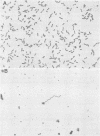Abstract
The name Tatumella ptyseos gen. nov., sp. nov., is proposed for a group of organisms (previously called group EF-9) isolated from clinical sources in the United States, Canada, and Puerto Rico. A total of 68% of these isolates were from sputum specimens. T. ptyseos strains are gram-negative, oxidase-negative, fermentative rods that grow on MacConkey agar. The distinctive biochemical characteristics of 44 T. ptyseos isolates were as follows: acid but no gas from D-glucose, sucrose, and, usually (71%), D-xylose (62% delayed); no acid from lactose, maltose, or D-mannitol; negative tests for indole, urea, methyl red, gelatin, L-lysine decarboxylase, and L-ornithine decarboxylase; L-arginine dihydrolase variable; phenylalanine deaminase positive; Voges-Proskauer positive by the Coblentz method but negative by the O'Meara method; nonmotile at 36 degrees C but 66% weakly motile (30% delayed) at 25 degrees C; Simmons citrate positive at 25 degrees C (89%) but Simmons citrate negative at 36 degrees C. Deoxyribonucleic acid-deoxyribonucleic acid relatedness studies on 26 T. ptyseos strains showed that they were 80 to 100% related at 60 degrees C, which indicated that they comprise a single species. The deoxyribonucleic acid relatedness to other species within the Enterobacteriaceae was 7 to 38%. This is evidence that this species belongs in this family, is distinct from all described species and is best placed in a new genus. The T. ptyseos isolates studied were susceptible to all of the antimicrobial agents tested by broth dilution; these antimicrobial agents were amikacin, ampicillin, cephalothin, chloramphenicol, gentamicin, kanamycin, tetracycline, and tobramycin. Three striking differences between T. ptyseos and other members of the Enterobacteriaceae were its large zone of inhibition around penicillin (mean diameter 24 mm), its tendency to die on some laboratory media (such as blood agar) within 7 days, and its small number (usually one) of flagella. Strain H36 (=ATCC 33301, =CDC D6168, =CDC 9591-78) is the type strain of this new species. T. ptyseos is the type species for the genus Tatumella.
Full text
PDF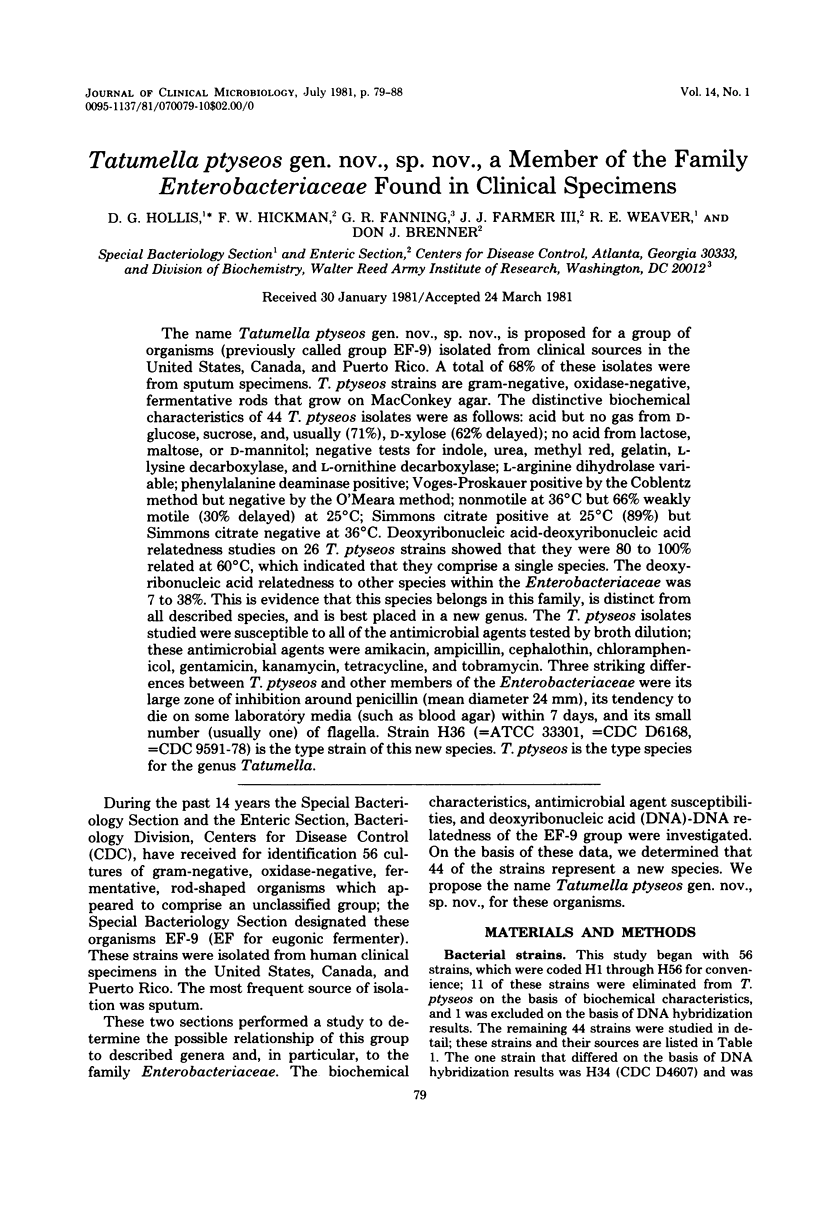
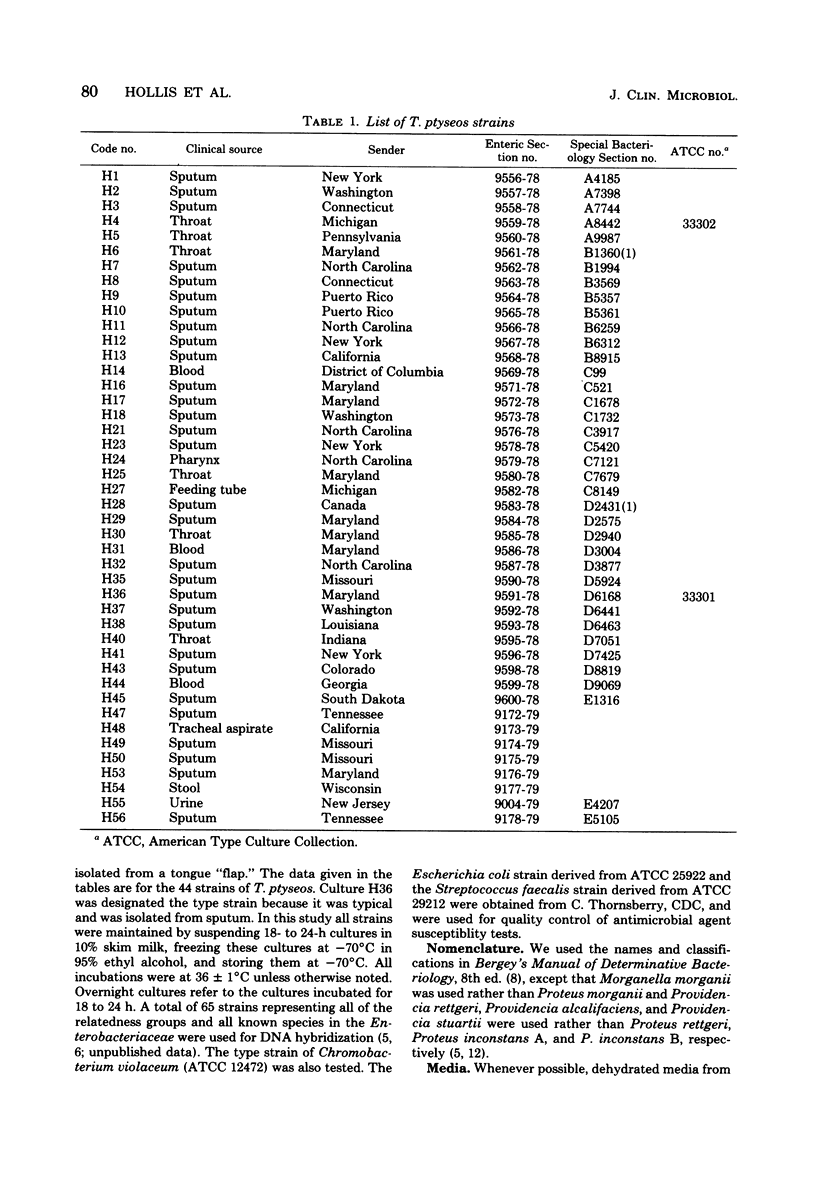
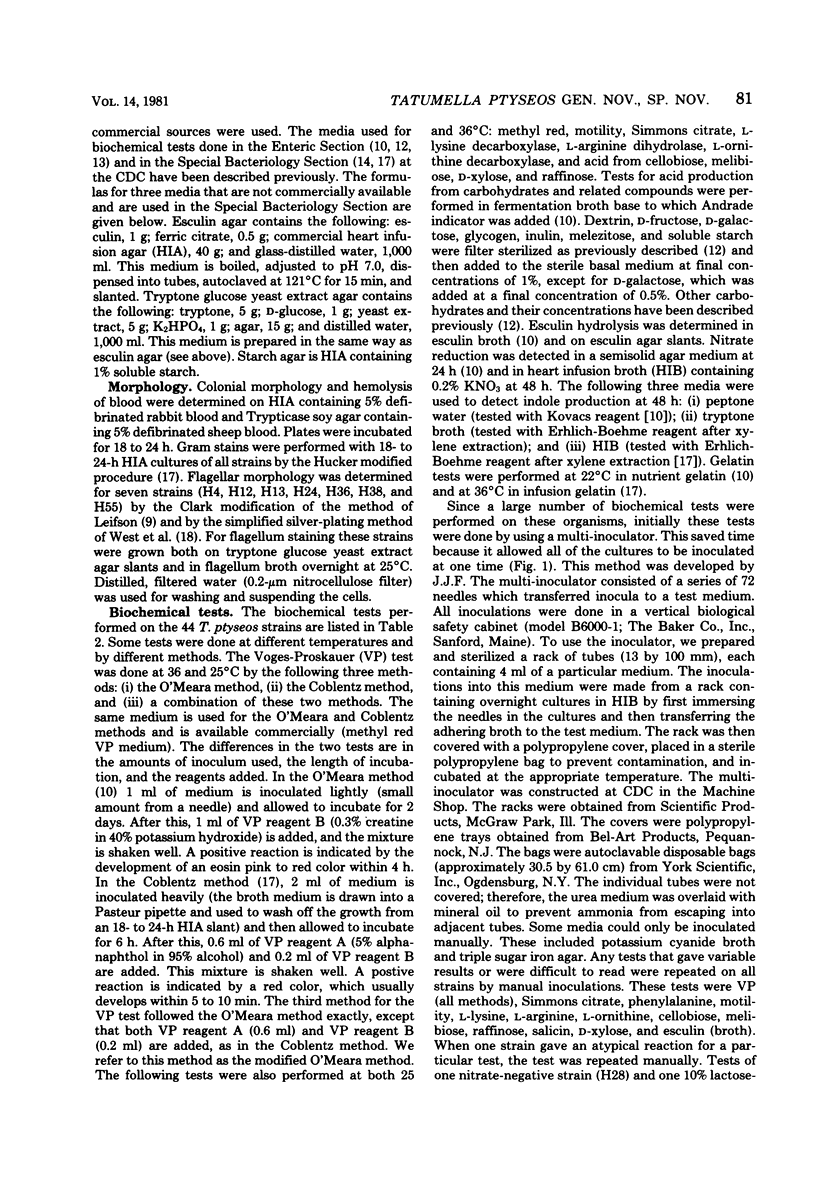
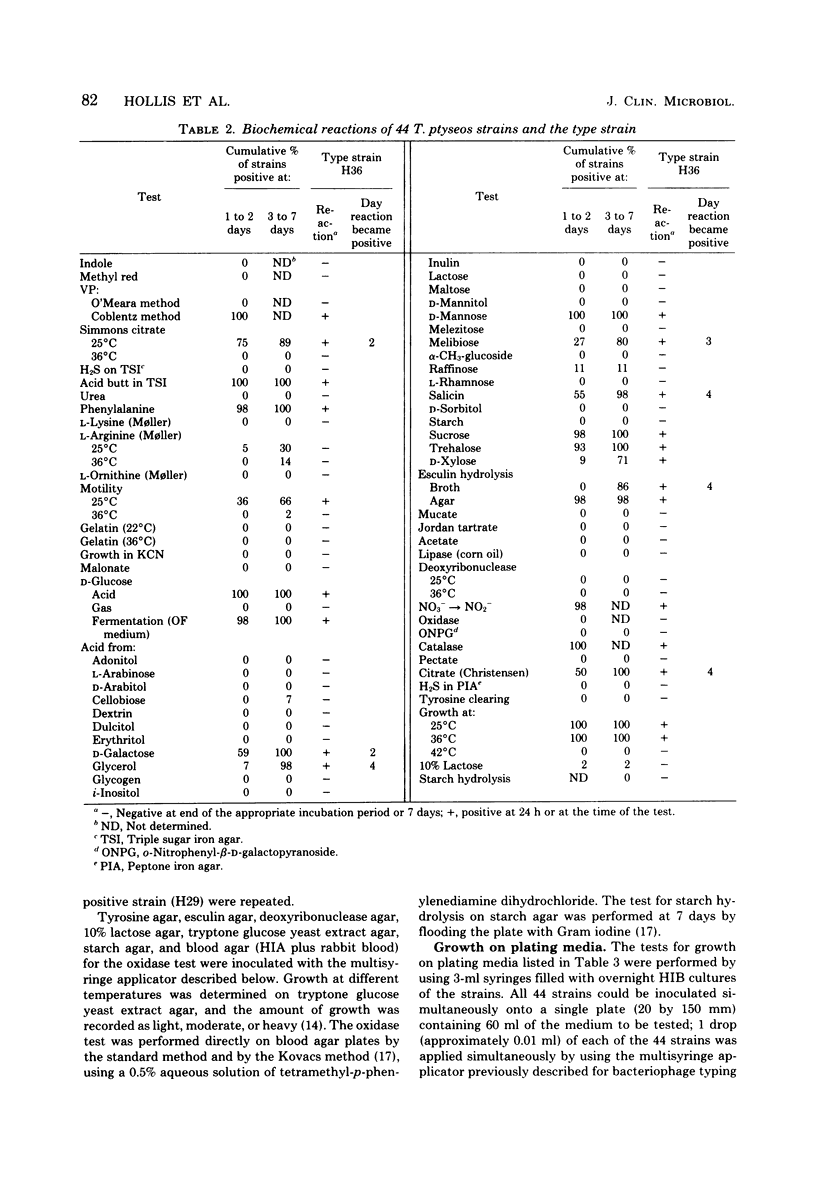
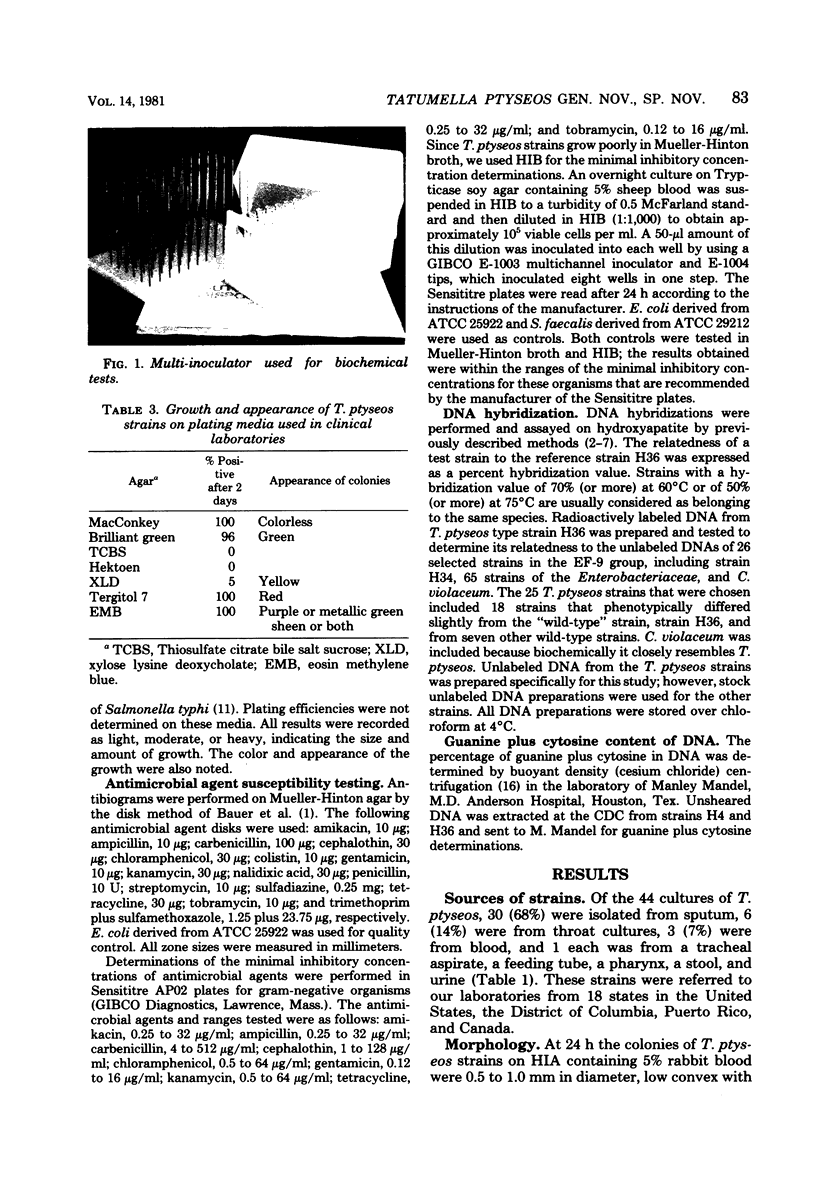
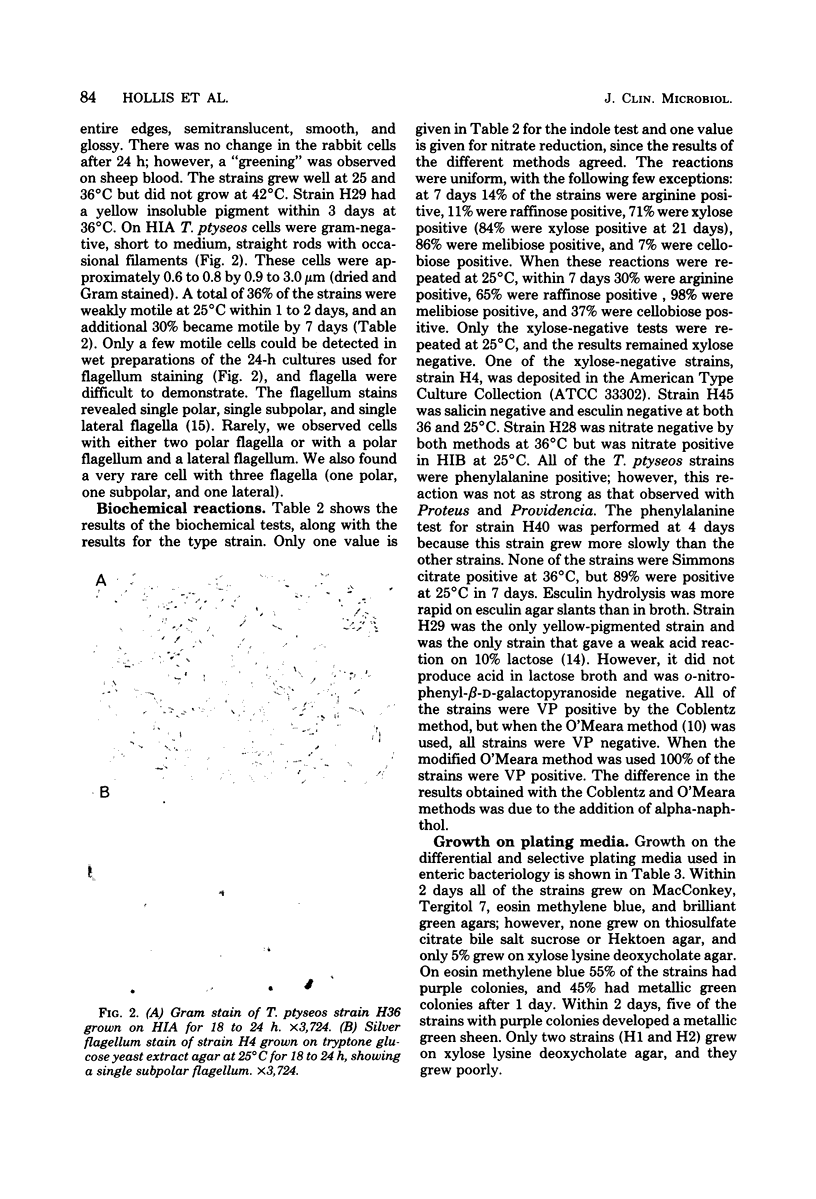
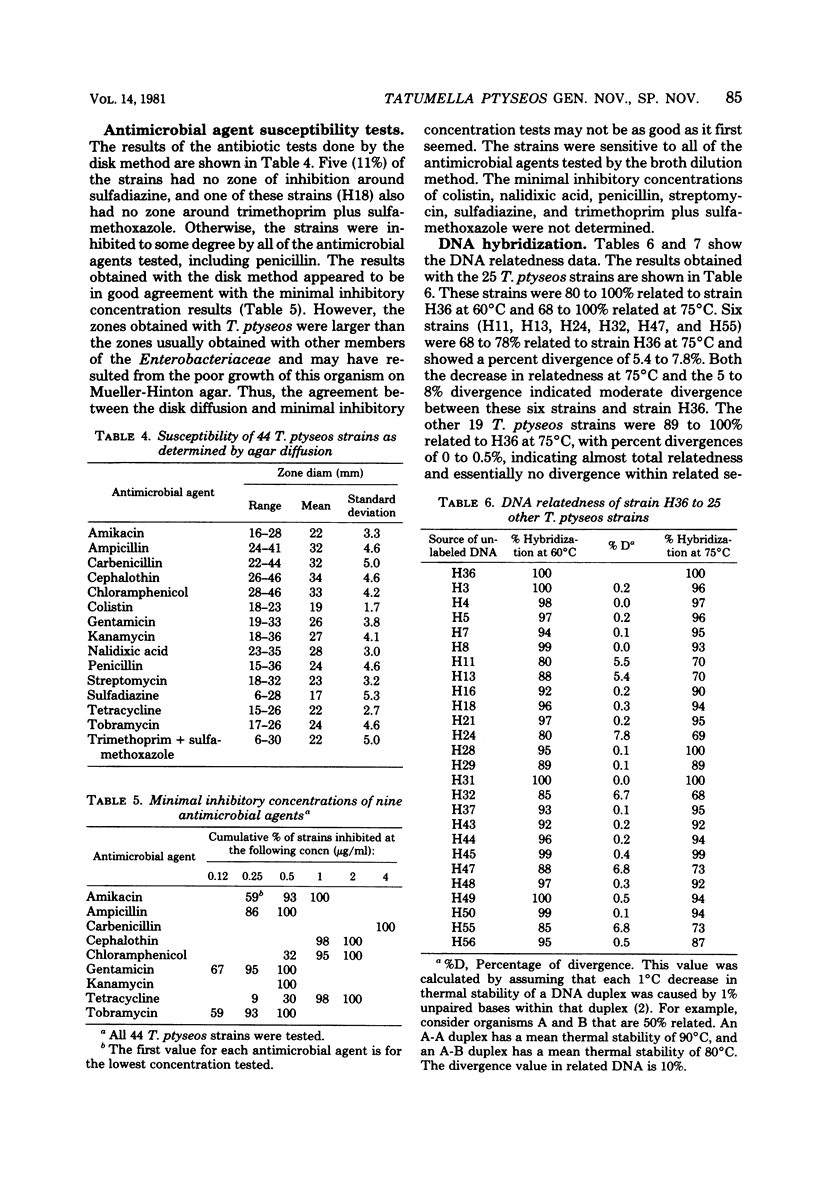
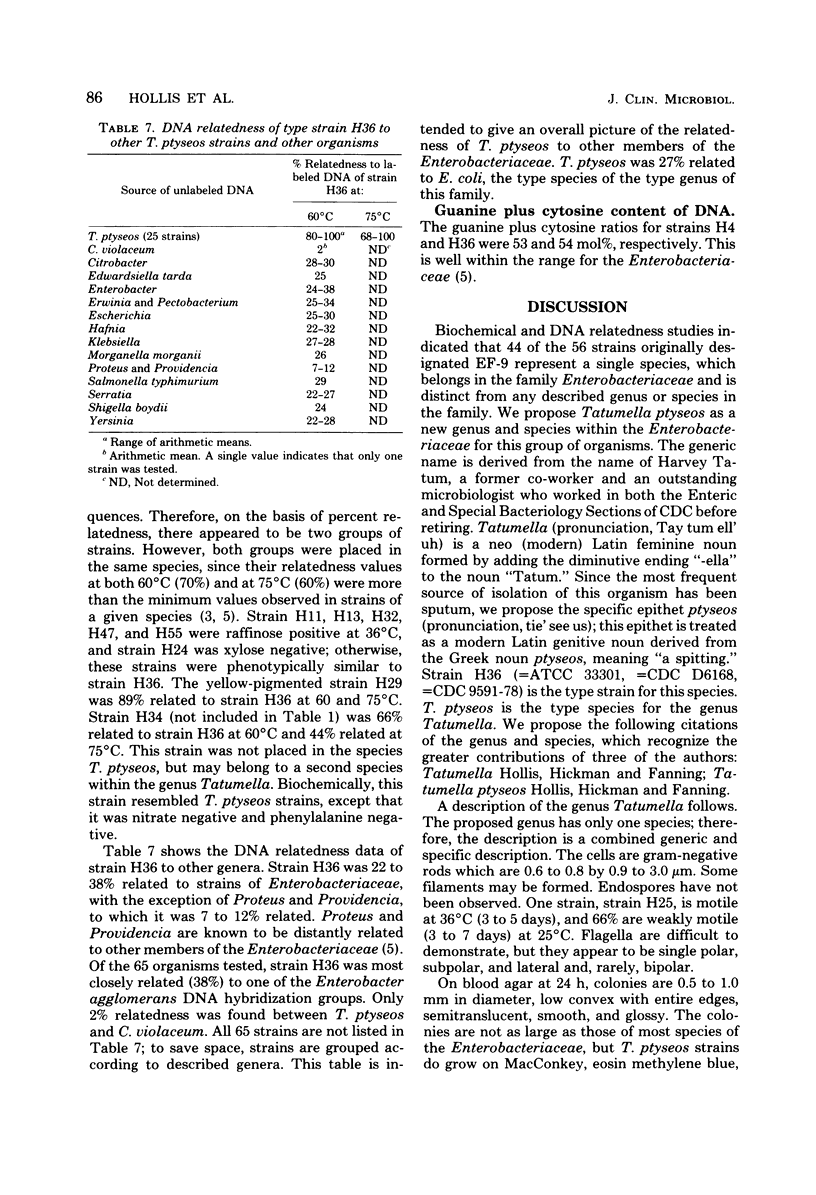
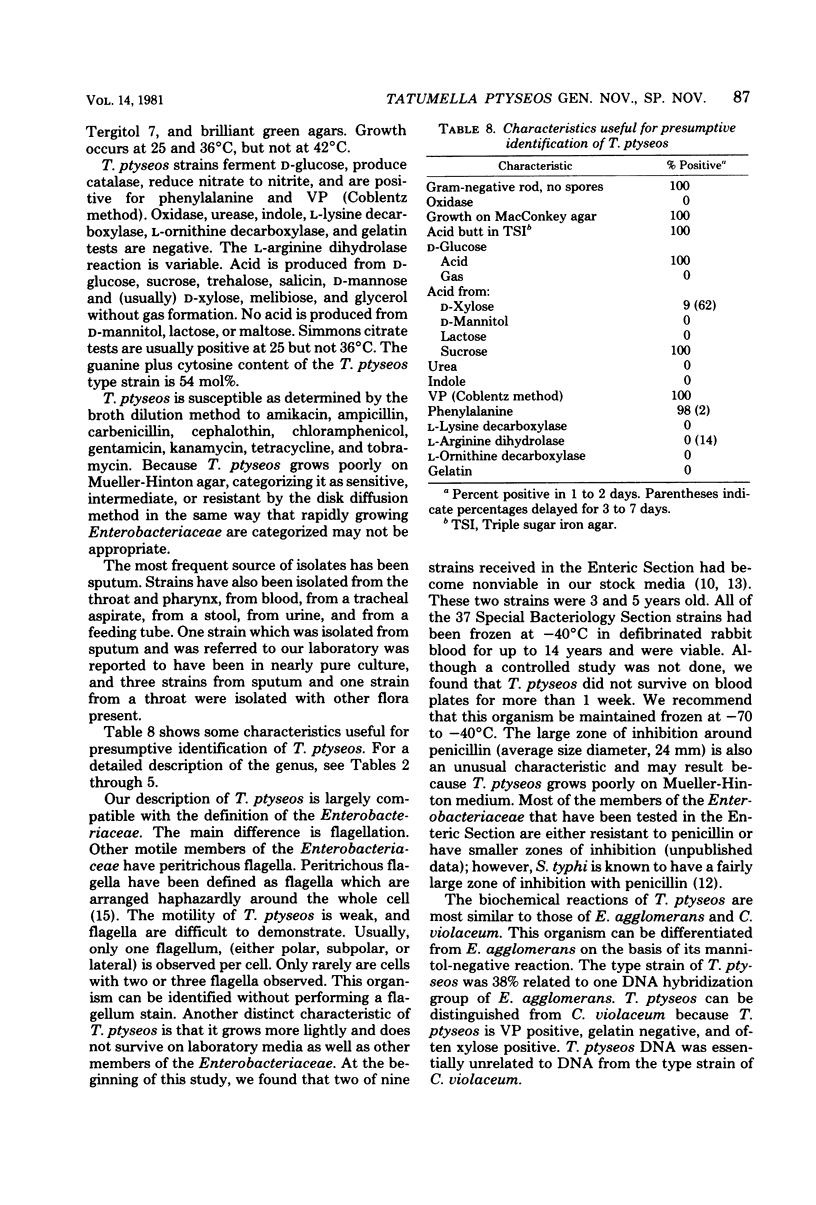
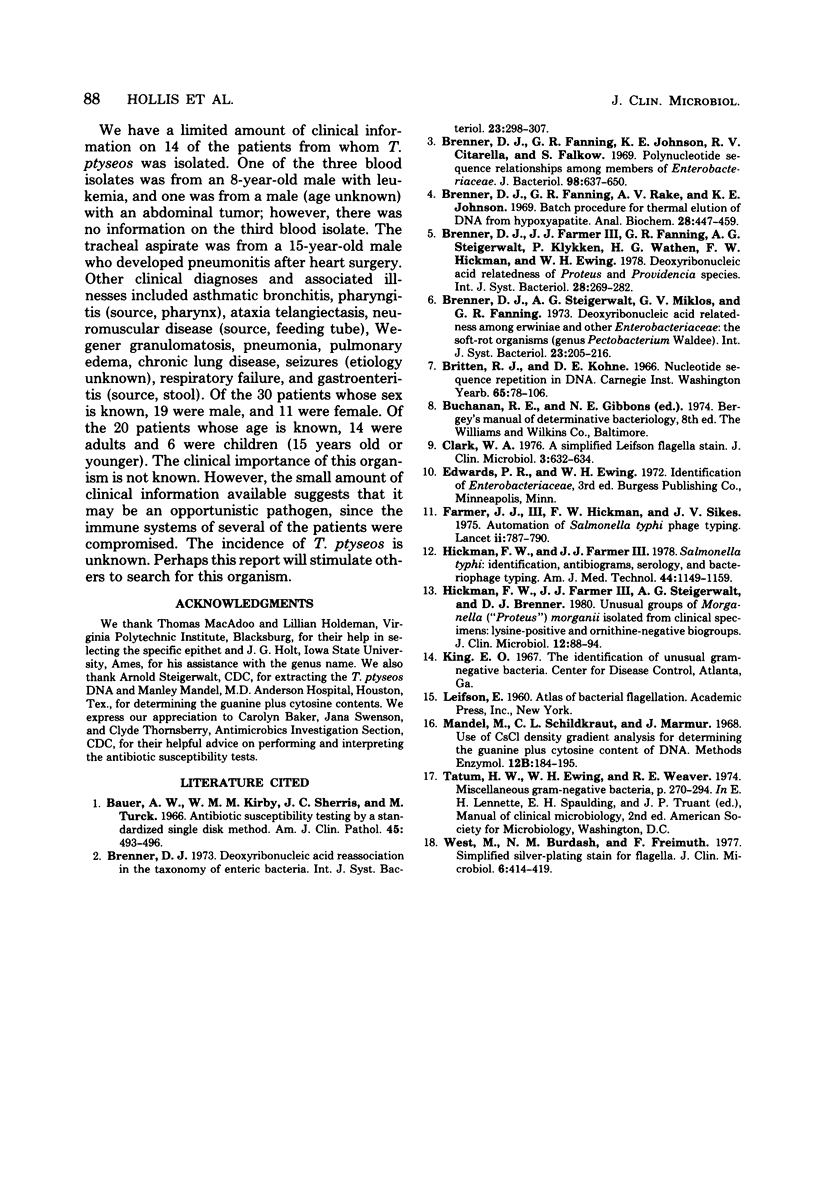
Images in this article
Selected References
These references are in PubMed. This may not be the complete list of references from this article.
- Bauer A. W., Kirby W. M., Sherris J. C., Turck M. Antibiotic susceptibility testing by a standardized single disk method. Am J Clin Pathol. 1966 Apr;45(4):493–496. [PubMed] [Google Scholar]
- Brenner D. J., Fanning G. R., Johnson K. E., Citarella R. V., Falkow S. Polynucleotide sequence relationships among members of Enterobacteriaceae. J Bacteriol. 1969 May;98(2):637–650. doi: 10.1128/jb.98.2.637-650.1969. [DOI] [PMC free article] [PubMed] [Google Scholar]
- Brenner D. J., Fanning G. R., Rake A. V., Johnson K. E. Batch procedure for thermal elution of DNA from hydroxyapatite. Anal Biochem. 1969 Apr 4;28(1):447–459. doi: 10.1016/0003-2697(69)90199-7. [DOI] [PubMed] [Google Scholar]
- Clark W. A. A simplified Leifson flagella stain. J Clin Microbiol. 1976 Jun;3(6):632–634. doi: 10.1128/jcm.3.6.632-634.1976. [DOI] [PMC free article] [PubMed] [Google Scholar]
- Farmer J. J., 3rd, Hickman F. W., Sikes J. V. Automation of Salmonella typhi phage typing. Lancet. 1975 Oct 25;2(7939):787–790. doi: 10.1016/s0140-6736(75)80004-3. [DOI] [PubMed] [Google Scholar]
- Hickman F. W., Farmer J. J., 3rd Salmonella typhi: identification, antibiograms, serology, and bacteriophage typing. Am J Med Technol. 1978 Dec;44(12):1149–1159. [PubMed] [Google Scholar]
- Hickman F. W., Framer J. J., 3rd, Steigerwalt A. G., Brenner D. J. Unusual groups of Morganella ("Proteus") morganii isolated from clinical specimens: lysine-positive and ornithine-negative biogroups. J Clin Microbiol. 1980 Jul;12(1):88–94. doi: 10.1128/jcm.12.1.88-94.1980. [DOI] [PMC free article] [PubMed] [Google Scholar]
- West M., Burdash N. M., Freimuth F. Simplified silver-plating stain for flagella. J Clin Microbiol. 1977 Oct;6(4):414–419. doi: 10.1128/jcm.6.4.414-419.1977. [DOI] [PMC free article] [PubMed] [Google Scholar]




